Paint. Heal. Grow.
September 1, 2019
Summary
Art & Creativity for Healing participants harness the energy of color to evoke individual healing. This Report explains the nature of color and considerations that inform the Art4Healing® method.
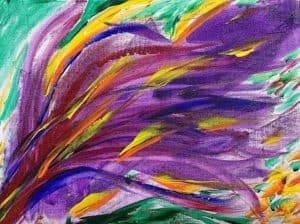
The Language of Color
How Color's Energetic Nature Affects Emotions and Can Heal

Introduction
In this Special Report, we introduce you to our view on the Language of Color and how it relates to healing.
At the very essence, color is the re-transmission of visible energy that’s not absorbed by an object. Language and culture vary around the world, but color’s energetic nature is universal.
At Art & Creativity for Healing, Participants use their own creative energy to transfer colors to canvas. When they observe and contemplate the results, the energy from the colors reveals their emotions. This energy feedback loop often promotes a sense of well-being.
This report will help you comprehend the debate on the nature of color, various cultural and linguistic interpretations of color, and how color-related therapy can heal.
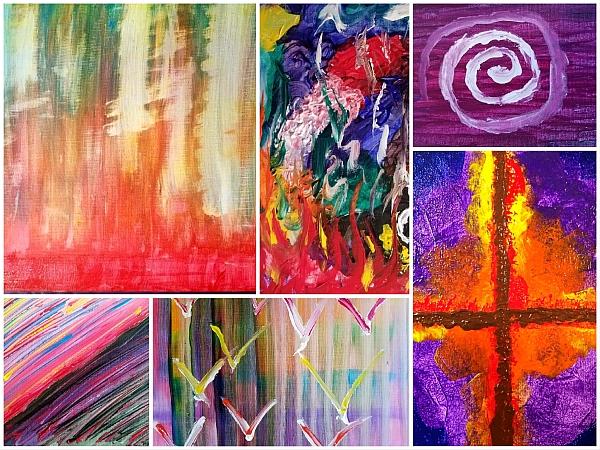
Art4Healing® Participant Creations
What is Color?
Before we discuss the effects of color, let’s discuss what color “is” – at the core, color is energy! In fact, energy surrounds you in various forms all the time. The universe is full of electromagnetic radiation, from high energy gamma rays to low energy acoustical waves. Visible light is simply a portion of this spectrum of radiation that humans have evolved to see. (It’s actually a frequency between about 400 and 700 Terahertz!)

Pure, “white” light contains a combination of all the visible colors. These colors can be split using prisms or filters, as demonstrated by Sir Isaac Newton in 1665. Since light can act as a wave, each color has its own distinct frequency. Red has the lowest frequency wave, and following through the colors of the rainbow, the wave frequencies increase all the way to violet.
People see color when some wavelengths of light are absorbed by objects and others are refracted or reflected back to the eye. For example, an apple is red because it absorbs all other colors except red, allowing only that color to “bounce” back to the viewer.
But, does everyone see the same color? Newton’s studies concentrated on the scientific aspects of color, claiming “yes.” However, Wolfgang Von Goethe argued that color and light have subjective and emotional aspects in “A Theory of Color” as early as the 1700s, and the debate has continued to this day.
The Art & Creativity for Healing Connection
Goethe’s thinking indirectly influenced the Art4Healing® method! Laurie Zagon, the method’s creator, worked as a University Fine Arts Professor with Herbert Aach in New York City. Aach is widely credited with creating the “de facto” English translation of Goethe’s “A Theory of Color.” (Wikipedia, 2019)
Laurie was also influenced by the work of Johannes Itten in “The Elements of Color” – particularly the notion of subjective timbre. Itten observed that students produced their best works when working with colors that had similar hues to a preferred starting color, or “home color.” (True Color International, 2013) Art & Creativity for Healing uses individual colors to represent participant emotions as a basis of the method. Focusing on particular colors helps create self-awareness and draw out a participant’s feelings.
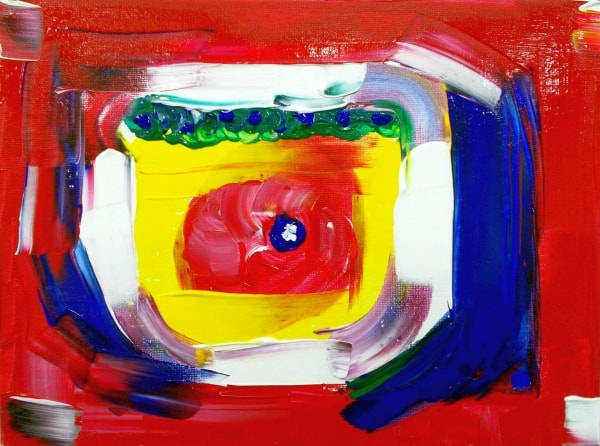
Art4Healing® Participant Creation
Participant Quote
“This Art4Healing is a life-changing group. I didn’t expect to learn about myself so much through different colors. Especially since this was my first time painting.”
– Domestic Violence Survivor
Where Does a Color's Name Come From?
Now that we understand the nature of color, let’s discuss what color actually “means” before we delve into the healing effects of color.
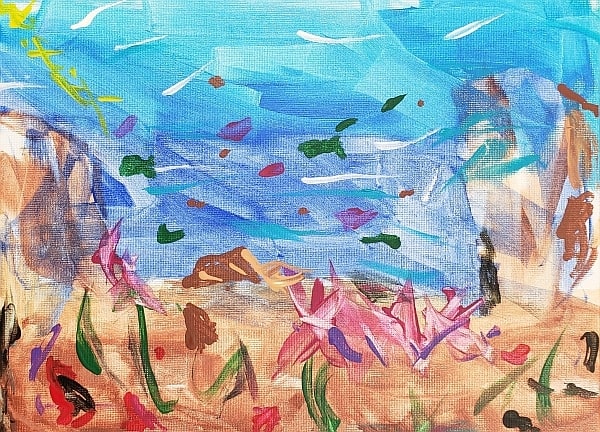
Art4Healing® Participant Creation
So - Does "blue" exist?
Scientifically, yes – and it’s about 460 Terahertz! Practically, no – as each person perceives color slightly differently. Some color perception differences can be physical, but in many cases, color is a culturally perceived notion.
In some cultures, there are multiple words for the same color or no words for a color at all. Greeks, for example, had relatively few descriptions for the color blue. And this comes from a nation of islands! It’s not that the Greeks weren’t able to perceive the color. As a result of their culture, the Greeks had a different system of describing colors.
It seems the Greeks focused more on the darkness and lightness of something rather than the hue. As a result, a lot of descriptive color words can be found in Ancient Greek, but no direct translation of “blue”. Many of the words relating to the ocean referred to the shimmer of the water or the attention-grabbing effect of the ocean itself. (Sassi, 2018)
Color's Linguistic Evolution
In the west, the color system we’re most familiar with is the Color Sphere, created in 1898 by American Albert Henry Munsell. This model breaks any perception of color into three aspects: hue – the wavelength of the light, lightness – from white to black, and saturation – the purity of the color being perceived.
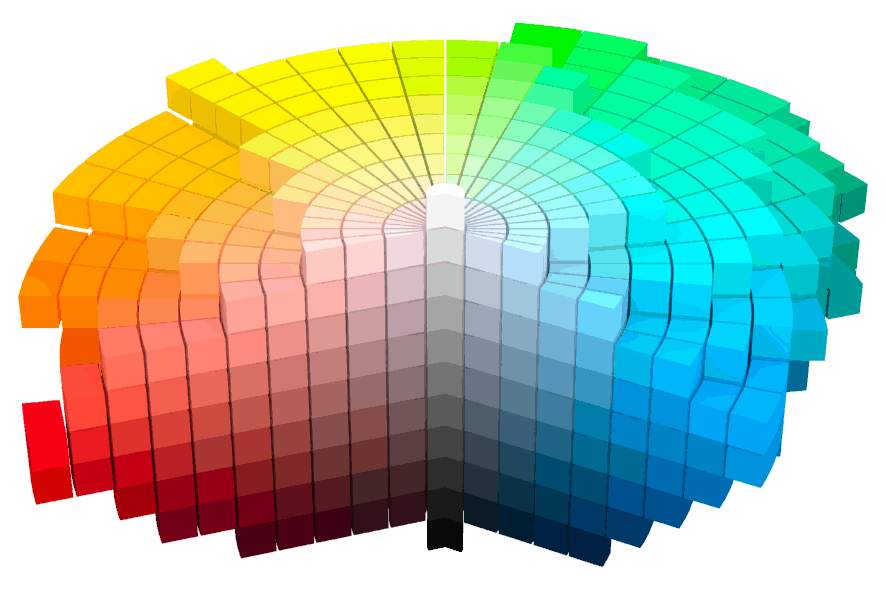
The Munsell color system has been used for a number of studies on how descriptions of color evolve. Research from 1969 concluded that there exists a kind of evolution of color description among cultures. The most basic cultures have words for black and white. If a third color comes into play, it’s red. Next come yellow and green. Finally, blue enters the linguistic spectrum. In a few languages, as many as 11 basic color terms are defined: black, white, gray, red, orange, yellow, green, blue, purple, pink, and brown. (Trafton, 2017)
This study was supported again in 2017. MIT cognitive scientists studied 100 languages and found languages tend to divide the “warm” part of the color spectrum into more color words, such as orange, yellow, and red, compared to the “cooler” regions, which include blue and green. The researchers surmise that “warmer” colored objects are more easily distinguished in a scene. This makes labels for warmer colors more consistent across cultures. (Trafton, 2017)
The Art & Creativity for Healing Connection
The Art4Healing® method was specifically designed to help participants express feelings when words can’t. Colors represent feelings, but we don’t name colors or provide interpretation. Every student’s “blue” is exactly whatever it means to them, and ONLY the student knows the meaning!
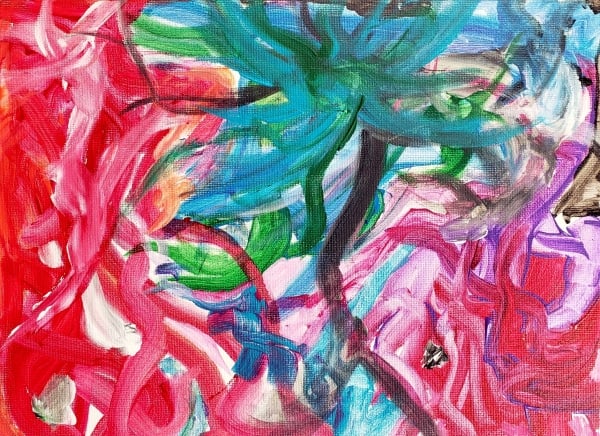
Art4Healing® Participant Creation
Participant Quotes
“I like this class because I vent with the colors. I love to express my feelings in color”
– Man, recently Out of Prison
“This workshop made me feel like Picasso and I could use colors to put all the sadness onto the painting – I see the power of this process”
– Grief workshop, City of Stanton
What Does a Color Mean?
Whether a color is verbalized or not, the perception of color still elicits emotional responses. These responses vary from culture to culture. According to studies we’ve discussed, cultures have more specific names for black, white, and “warm” colors. Therefore, these colors tend to elicit the strongest emotional responses across groups. (Mehrabian & Valdez, 1994)
Researchers have experimented with various methods of measuring color and emotional responses. At the heart of the debate – is color “universal” or “subjective”? (our Newton vs. Goethe debate)
One study took place in 1994, with two hundred and fifty University of California undergraduates (103 men, 147 women). Three different studies were performed as part of this research. The first focused on the emotional impact of color saturation and brightness. A second looked at the relationship between a color’s hue (wavelength) and emotion. Finally, a study on monochromatic shades was performed.
On the two studies related to color, some interesting results were obtained. In the study on brightness and saturation, brightness was found to have a much stronger impact on emotion than saturation. Also, the research showed brighter and more saturated colors pleased participants more.
Regarding hue (the second study), short-wavelength hues (purple, blue) were rated the most pleasant. Intermediate colors were assigned lower levels of pleasantness. On the contrary, as the wavelengths extended past yellow-red and red, pleasure increased again! Complementary colors scored higher pleasure ratings than non-complementary colors. (Epps & Kaya, 2004)
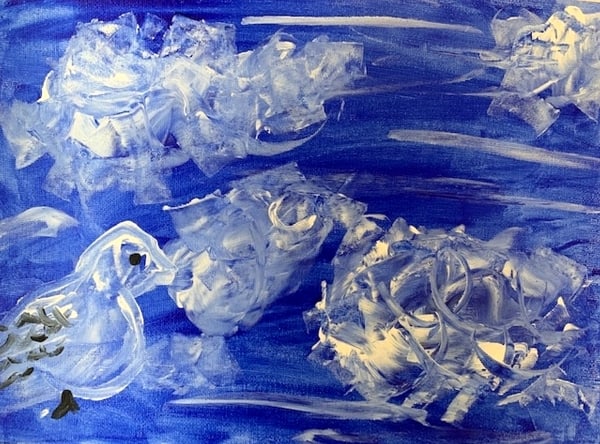
Art4Healing® Participant Creation
Another study took place in 2004, where 98 students (44 men and 54 women) were shown randomized color samples against a neutral background on a computer screen. They were then asked, “What emotional response do you associate with this color? How does this color make you feel?” and “Why do you feel this way?”
Participants found principal hues were more positive than intermediate hues or achromatic colors. Green was mainly positive, with associations of nature. Blue was also highly rated, eliciting responses of calmness, happiness, comfort, and peace. However, blue had some negative responses associated with “feeling blue”, night, and sadness. The study also reinforced the notion of color relating to things, objects, events, or physical space. For instance, “yellow-red” provoked responses such as “Halloween” or “school bus.” (Epps & Kaya, 2004)
In fact, almost every color surveyed had different connotations depending on the participant. Red was associated with love, but also Satan. Black was associated with nice clothes and sports cars but also evil. As such, the study concludes: “a color-related emotion is highly dependent on personal preference and one’s past experience with that particular color.” (Epps & Kaya, 2004)
The Art & Creativity for Healing Connection
These studies demonstrate the power of Art & Creativity for Healing. Our method is designed around the fact that every Participant experiences a different word, emotion, or energy in each color based on their own unique perception.
Participant Quote
“This was a very different and eye-opening experience. Normally, I use art as a way of distraction. I will spend hours on inches of canvas just to keep away all of my emotions I’ve been feeling.
This class has taught me to use art for the exact opposite reason. This class has taught me that art and color can be a really good way to express feelings.
My art no longer has to be used to escape feelings. My art now has a deeper meaning and I will be using these exercises in my own personal artwork.”
– Marine Base Wounded Warrior
Can Color Heal?
We’ve considered that color is energy, and this energy can affect emotions. But can color heal?
As science has advanced, microwaves, radio waves, ultrasound, gamma rays, and x-rays have improved life in many areas. Laser light is used to perform surgery and in technology applications. Baths of blue light rather than blood transfusions are now used to treat premature babies with neonatal jaundice. Music therapy – audible waves of energy – is an accepted therapeutic genre. (Vasquez)
Why should color therapy be any different? After all, visible light is just another part of the energy continuum. And, visible light makes up the majority of the electromagnetic radiation the sun gives off. Is it any wonder that almost every living thing on earth has adapted to react to visible light?
Alexander Schauss, director of the American Institute for Biosocial Research, said the electromagnetic energy of color interacts in some still unknown way with the pituitary and pineal glands and the hypothalamus, deep in the brain. These organs regulate the endocrine system, which controls many basic body functions and emotional responses, such as aggression. (Gruson, 1982)
Light has a direct effect because the body doesn’t need to break down compounds to obtain the desired effect. One study found electromagnetic frequencies, such as color, are a hundred times more efficient in relaying information to the cells than physical signals such as hormones, neurotransmitters and pharmaceutical agents. (Vasquez) Remember – the speed of light is around 186,000 miles per second! Chemicals move through the body at the rate of centimeters per second. Eastern culture has used acupuncture for centuries to stimulate “energetic pathways” in the body. Light stimulation is theorized to produce similar results.

Art4Healing® Participant Creation
Recent scientific study centers around visual brain stimulation with color using a method called “Emotional Transformation Therapy” (ETT). Patients who had been otherwise resistant to treatment have recovered from a wide variety of trauma, depression, and physical pain. (Vasquez)
Emotional Transformation Therapy’s process focuses on the process of color’s interaction with human consciousness, along with guidance from a counselor. By combining the two, the scientific properties of colors and their emotional context are both considered.
Color therapy has power because light stimulation activates and resonates with specific emotional states in the brain. When guidance is introduced while the brain is in this activated state, physical and emotional problems corresponding to that state can be resolved. The key is precisely activating different emotional states during guidance.
Researchers have identified several features of color that expand or minimize its therapeutic impact. Some of these features include:
- Length of viewing time
- Brightness
- Saturation
- Hue
- Visual depth perception
- Angle of viewing the color
- Emotional state at the time of viewing the color
- Strobic emission of color
Scientists and researchers are continuing to make breakthroughs in color therapy. Several have been consistently observed and are awaiting scientific trials. Some of the proposed applications of Emotional Transformation Therapy include rapid long-term relief of:
- Long-term major depression
- Post-traumatic stress disorder
- Panic disorder
- Seasonal affective disorder
The Art & Creativity for Healing Connection
The Art & Creativity for Healing technique was specifically designed to allow Participants to express their feelings in color where words can’t express them. Participants transfer color to a blank canvas, adding energy in various wavelengths to the canvas. Subconsciously, Participants may be transferring the wavelengths of energy they need. Through this energy feedback and creative process, thoughts are released and reflected back as healing energy to the student when they view their creation. In a sense, Participants create their own “color therapy”!
While Art & Creativity for Healing isn’t a “scientific” organization, we consistently see similar healing results to those in research studies. We truly believe in the transformative and healing nature of color!
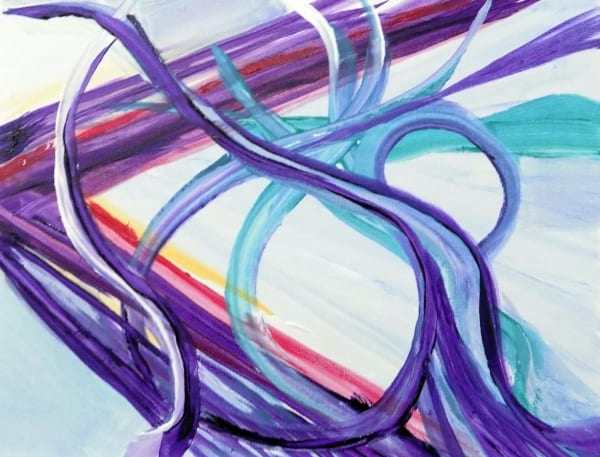
Art4Healing® Participant Creation
Participant Quotes
“I didn’t realize how much art and color had to do with my emotions”
– Troubled Teen in an Alternative High School
“Nothing really touches me like the healing power of paint and color.”
– Senior Citizen
Want More Information?
We’d love to hear from you today. We’re standing by to speak with you one-on-one about the power of healing art!
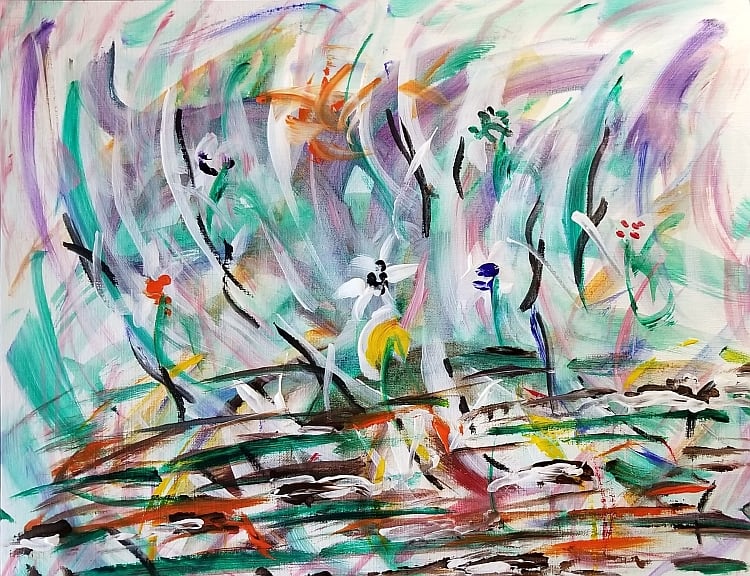
Online Courses
We have over 20 courses available online! Relax and experience the Art & Creativity for Healing method in the comfort of your own space. All courses are only $39! Check out our course list and introduction video from Laurie here:
Online Courses: https://courses.art4healing.org/
Studio Workshops
We offer a variety of 3-hour workshops at our Studio on Laguna Hills! Visit our website for frequently asked workshop questions and our upcoming workshop calendar.
Program Outcomes and Past Special Reports
We engage an outside party to help us compile Outcome Data for all of our Programs. We encourage you to visit our Results page, where you can view Outcome Data. We also have prior Special Reports available for you to review!
Art4Healing® International Certification Program Online
Can’t make it to our studio? We are proud to offer the only globally recognized Art4Healing® Certification, exclusively available online.
To become certified online, students experience and complete Art4Healing® workshops and assignments through an online platform within a timeline of 9 months (or less). Students are matched with an Art4Healing® Coach who will answer questions and review his/her assignments and facilitated workshops.
Find out more about this exclusive program here.
Painting Your Heart Out, by Laurie Zagon
Read the inspiring account of how Laurie Zagon started Art & Creativity for Healing, a Southern California non-profit organization that provides fine art workshops for children, teens, and adults suffering from abuse, illness, grief, or stress.
Learn from former students about the extraordinary impact that Art & Creativity for Healing has had on their lives. Art4Healing® Painting Your Heart Out is a non-threatening method that enables people who cannot draw a straight line to become successful in expressing their feelings through art. The creative process used in this book encourages participants to paint using abstract strokes of color on canvas to translate life’s everyday stresses.
Available on Amazon: https://www.amazon.com/Art-Healing-Painting-Your-Heart/dp/1517072247/
Works Cited
- Epps, H., & Kaya, N. (2004). Relationship Between Color and Emotions: A Study of College Students. College Student Journal, 38(3), 396-405.
- Gruson, L. (1982, 10 19). Color has a Powerful Effect on Behavior, Researchers Assert. Retrieved from New York Times: https://www.nytimes.com/1982/10/19/science/color-has-a-powerful-effect-on-behaviorresearchers-assert.html
- Mehrabian, A., & Valdez, P. (1994). Effects of Color on Emotions. Journal of Experimental Psychology: General, 123(4), 394-409. Retrieved from https://pdfs.semanticscholar.org/4711/624c0f72d8c85ea6813b8ec5e8abeedfb616.pdf
- Sassi, M. M. (2018, 06 05). The Sea Was Never Blue. Retrieved from Pocket / Aeon: https://getpocket.com/explore/item/the-sea-was-never-blue
- Trafton, A. (2017, 09 08). Analyzing the language of color. Retrieved from MIT News: https://news.mit.edu/2017/analyzing-language-color-0918
- True Color International. (2013, 02 2016). Subjective Timbre – Getting it Backwards. Retrieved from True Color International: https://truecolour.com.au/featured/subjective-timbre-getting-it-backwards/
- Vasquez, S. R. (n.d.). Color: It’s Therapeutic Power for Rapid Healing. Subtle Energies & Energy Medicine, 17(2), 191-213. Retrieved from http://journals.sfu.ca/seemj/index.php/seemj/article/viewFile/43/33
- Wikipedia. (2019, 05 07). Herb Aach. Retrieved from Wikipedia: https://en.wikipedia.org/wiki/Herb_Aach
